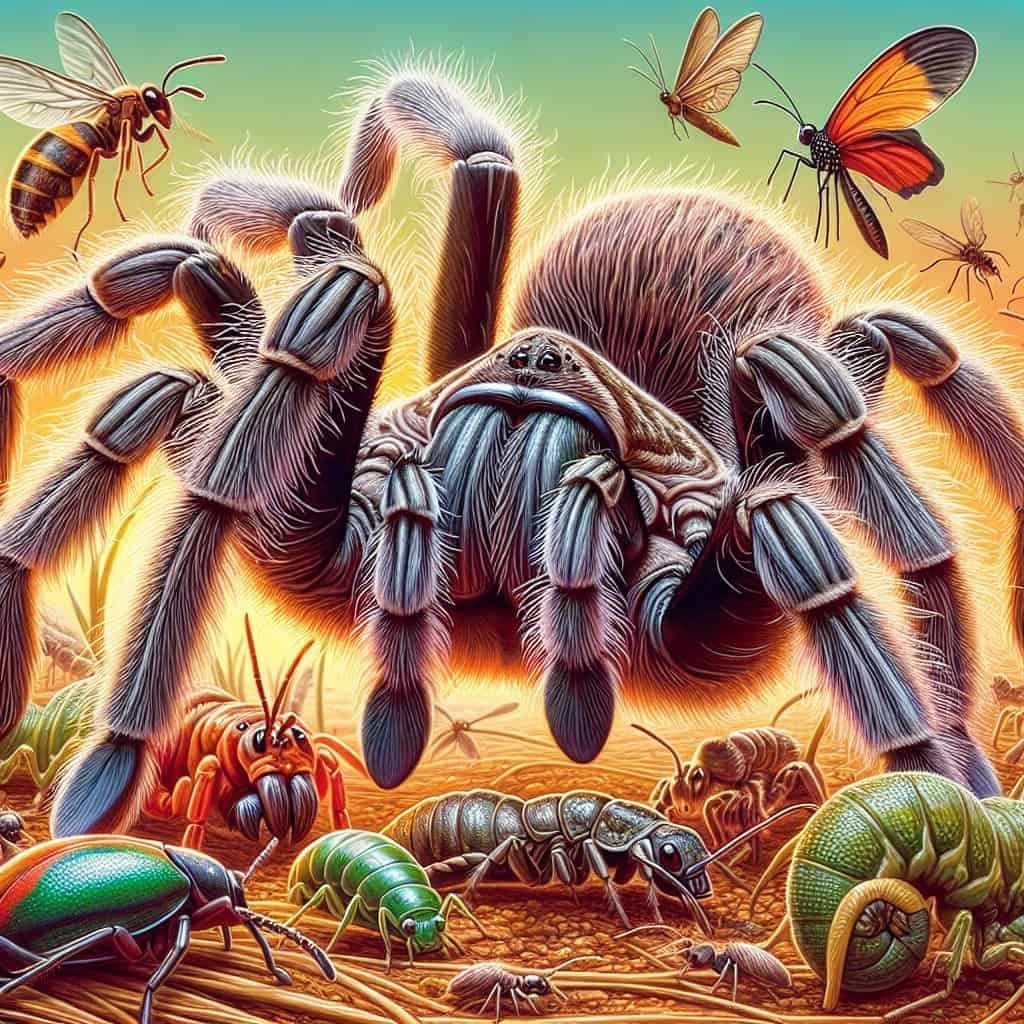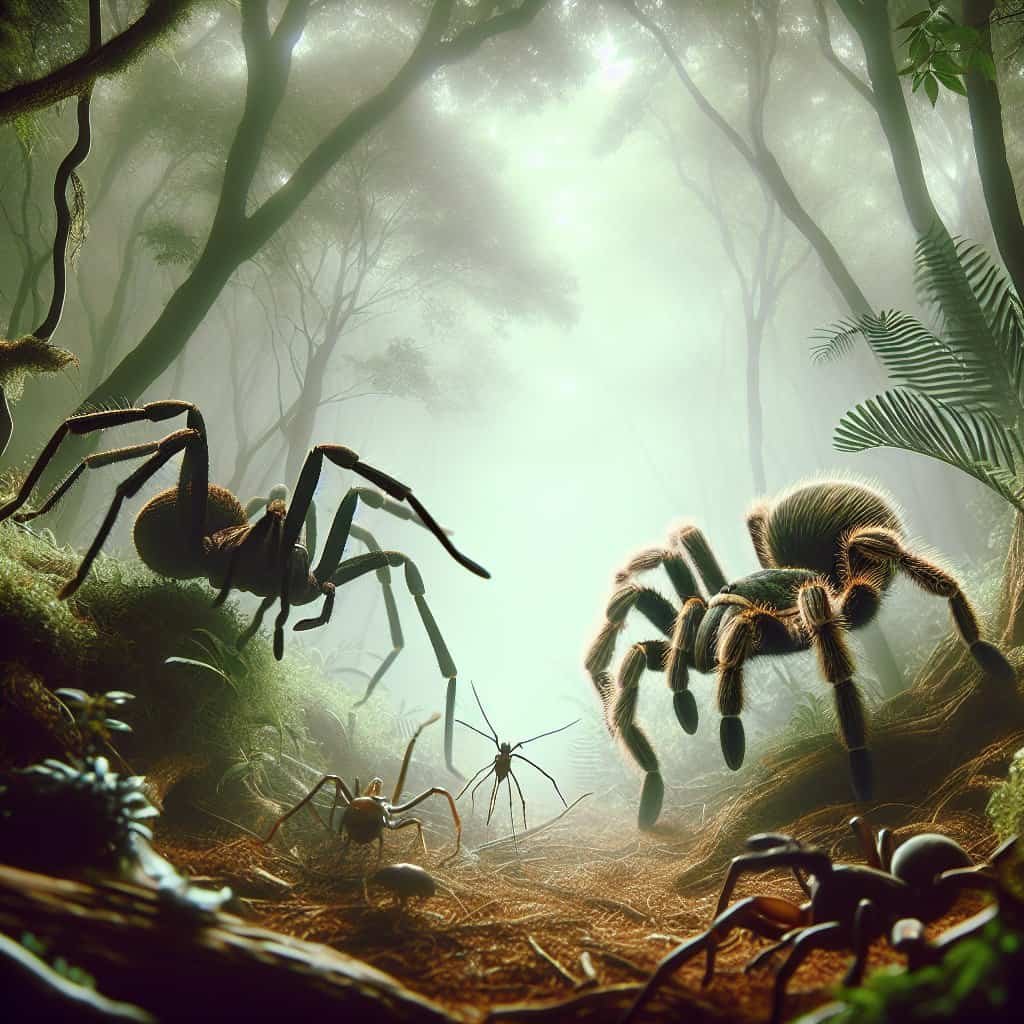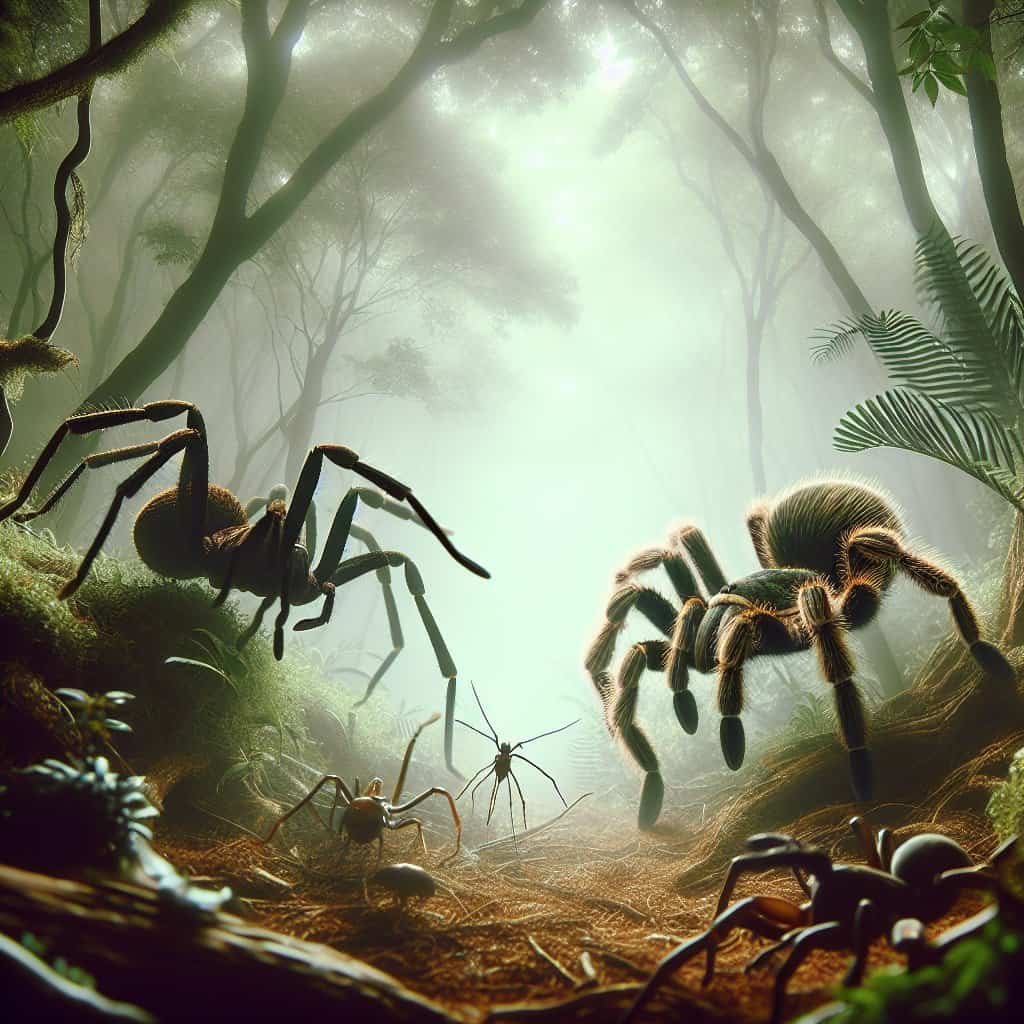Have you ever wondered if insects or arachnids can pose a threat to tarantulas? It’s a fascinating question that sparks curiosity about the complex interactions within the animal kingdom. While it may seem like tarantulas, with their impressive size and venomous bite, have little to fear, the reality is not as straightforward. In this article, we will explore the potential enemies that insects or arachnids can be to tarantulas, shedding light on the intriguing dynamics of these creatures’ coexistence. So, let’s embark on this journey into the world of tarantulas and their unlikely foes!
The Relationship Between Insects and Tarantulas
Tarantulas, like all predators, rely on a steady source of prey for their survival. While they primarily feed on insects and other arachnids, they themselves can become the target of predation. Insects and arachnids interact with tarantulas in various ways, either as prey or predators. Understanding these relationships can provide valuable insights into the intricate dynamics of tarantula ecosystems.
Prey for Tarantulas
Tarantulas have a diverse diet that primarily consists of insects. These eight-legged predators are known to consume a wide range of insects, including crickets, grasshoppers, beetles, cockroaches, and even moths. The availability of such prey varies depending on the habitat and the tarantula species, but insects undoubtedly form a significant part of their diet.
Predators of Tarantulas
While tarantulas may seem formidable, they are not impervious to predation. There are several insects and arachnids that pose a threat to tarantulas, either by actively hunting them or by competing with them for resources.
Insects as Prey for Tarantulas
Types of Insects Tarantulas Consume
Tarantulas display remarkable hunting behaviors and are opportunistic feeders. They often rely on their keen sense of touch and vibration detection to locate prey. Common insects that tarantulas consume include crickets, which are often seen as a staple in their diet. Additionally, grasshoppers, beetles, cockroaches, and various other insects make up a significant portion of a tarantula’s food sources.
Hunting Techniques
Tarantulas employ various hunting techniques to capture their insect prey effectively. Some species will actively chase down their prey, while others lie in wait, relying on stealth and ambush tactics to strike at just the right moment. Tarantulas may use their venomous fangs to immobilize their prey, or in some cases, they may employ silk to wrap and secure their victims before feeding.

Insects as Predators of Tarantulas
Ants
Certain species of ants can pose a threat to tarantulas. They often work together in large groups to overpower and overwhelm individual tarantulas. Fire ants, in particular, are known for their aggressive behavior and potent stings, which can incapacitate or kill tarantulas. Ants may attack tarantulas en masse, utilizing their numbers and coordinated strategy to overcome the larger arachnid.
Assassin Bugs
Assassin bugs, known for their stealth and predatory nature, are also known to prey on tarantulas. These insects use their long proboscis to inject venom into their victims, causing paralysis. Once the tarantula is immobilized, the assassin bug feeds on its body fluids, ultimately leading to the demise of the tarantula.
Mantis
Praying mantis, with their powerful grasping forelegs, are known to prey on various insects, including tarantulas. Although encounters between mantises and tarantulas are relatively rare, mantises are opportunistic hunters and will not hesitate to attack a tarantula if given the opportunity.
Dragonflies
Dragonflies, specialized aerial predators, primarily feed on flying insects. While they are less likely to directly target tarantulas, they can indirectly affect tarantulas by reducing the population of available flying insects. This could potentially impact tarantulas’ food sources and overall ecosystem dynamics.
Arachnids as Prey for Tarantulas
Types of Arachnids Tarantulas Consume
While tarantulas mainly feed on insects, they are not averse to consuming their own kind. When given the opportunity, tarantulas will prey on smaller arachnids such as scorpions, smaller spiders, and solifuges.
Hunting Techniques
When hunting arachnid prey, tarantulas employ similar strategies as they do with insects. They may pursue their prey actively or ambush them, using their venom to immobilize and eventually consume their victims.

Arachnids as Predators of Tarantulas
Scorpions
Scorpions, with their venomous stings, can pose a threat to tarantulas. While tarantulas generally have robust exoskeletons that provide some level of protection, certain species of scorpions possess potent toxins that can subdue or even kill tarantulas. Encounters between scorpions and tarantulas are often fierce battles between two formidable adversaries.
Spiders
Despite being arachnids themselves, certain spider species have been observed preying on tarantulas, albeit infrequently. These spiders, often belonging to the same family as the tarantula, are usually significantly smaller in size and rely on their agility and venom to overcome their larger counterparts.
Solifuges
Solifuges, also known as camel spiders or wind spiders, are a group of arachnids that have been observed to prey on tarantulas. These fast and agile predators use their powerful jaws to capture and immobilize their prey. While encounters between solifuges and tarantulas may not be as common as with other arachnids, the presence of solifuges can still impact tarantula populations in certain regions.
Competition Between Insects and Tarantulas
Food Source Competition
Insects and tarantulas often compete for the same food sources, particularly in environments where resources are limited. Both rely on insects as their primary food source, and the abundance or scarcity of insects can directly affect the feeding success of tarantulas. Intense competition for limited food resources can ultimately impact the survival and reproductive capabilities of both insects and tarantulas.
Territorial Competition
Tarantulas establish territories where they capture prey and build burrows to live in. Insects, on the other hand, do not have defined territories but instead move freely in search of food and suitable habitats. However, the presence of tarantulas can deter certain insects from occupying areas adjacent to the arachnid’s territories. This indirect competition for space and resources plays a role in shaping both the distribution and abundance of both insects and tarantulas.

Symbiotic Relationships Between Insects and Tarantulas
Tarantulas and Moths
Some tarantula species form symbiotic relationships with specific moth species. These moths lay their eggs near the tarantula’s burrow, and their larvae feed on the leftover prey that the tarantula discards after a meal. In return, the tarantulas benefit from having the moth larvae clean their burrows, removing potential disease-causing organisms and detritus.
Tarantulas and Beetles
Certain beetles have developed a mutually beneficial relationship with tarantulas. These beetles are often found living in close proximity to tarantula burrows, gaining protection from potential predators while also feeding on the droppings and leftover remains of the tarantula’s meals. This association allows both species to thrive and coexist in their shared habitat.
Tarantulas and Ants
While ants can pose a threat to tarantulas, in some instances, they have been observed to form mutually beneficial relationships. Ants may scavenge on leftover prey caught by the tarantula, helping keep the immediate vicinity clean. In return, the tarantula’s presence may deter potential predators or rival ant colonies, providing a safer environment for the ants. This symbiotic association showcases the complexity of interactions in tarantula ecosystems.
The Role of Insects in Tarantula Ecosystems
Indirect Impact on Tarantulas
Insects play a crucial role in tarantula ecosystems by serving as the primary food source for these arachnids. The abundance and diversity of insects directly influence tarantula populations, growth rates, and overall reproductive success. Changes in insect populations due to environmental factors or human activities can have cascading effects on the entire tarantula ecosystem.
Ecological Importance
Beyond being a source of food, insects also contribute to maintaining the ecological balance within tarantula habitats. By pollinating plants and aiding in decomposition, insects play a key role in nutrient cycling and maintaining the overall health of ecosystems. Their interactions with tarantulas and other organisms create a delicate web of relationships that contribute to the stability and sustainability of these ecosystems.

The Role of Arachnids in Tarantula Ecosystems
Indirect Impact on Tarantulas
Arachnids, including scorpions and other spiders, may compete with tarantulas for resources or directly predating on them. The presence of predatory arachnids can influence the distribution and behavior of tarantulas, forcing them to adapt and modify their hunting strategies. The interactions between tarantulas and other arachnids shape the structure and dynamics of tarantula ecosystems.
Ecological Importance
Despite potential conflicts, the presence of other arachnids contributes to the overall ecological diversity and complexity of tarantula ecosystems. Arachnids fulfill important roles as both predators and prey, participating in energy transfer and nutrient cycling. Their interactions with tarantulas create a dynamic and intricate web of biological relationships, which ultimately support the health and resilience of the ecosystem as a whole.
Strategies Tarantulas Use to Avoid Enemies
Camouflage and Mimicry
Tarantulas have evolved various strategies to avoid detection by predators. Many species have developed camouflage techniques, with body colors and patterns that blend with their surroundings, allowing them to blend seamlessly into their environment. Some tarantulas even mimic characteristics of ants or other insects, adopting their shape and behavior to confuse and deter potential predators effectively.
Defensive Behaviors
When faced with a threat, tarantulas have an array of defensive behaviors at their disposal. These may include rearing up on their hind legs to display their fangs and warning the potential predator, rubbing their abdomens to release irritating hairs, or emitting warning sounds through vibration. While these defensive mechanisms may not guarantee protection against all enemies, they serve as effective deterrents in many instances.
In conclusion, the relationship between insects, arachnids, and tarantulas is complex and multifaceted. While insects are the primary food source for tarantulas, they can also become their predators. Similarly, certain arachnids can prey on tarantulas or compete with them for resources. Symbiotic associations exist between certain insects and tarantulas, demonstrating the intricate relationships within these ecosystems. Indirectly, both insects and arachnids play vital roles in the functioning and balance of tarantula ecosystems. By understanding these relationships, we can gain a deeper appreciation for the fascinating interactions that shape these unique habitats.

